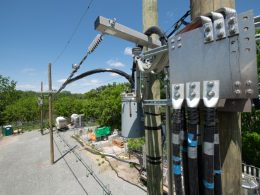Texas is solidifying its dominance in renewable energy and battery capacity, with nearly 80% more combined solar, wind, and battery capacity than any other US state. As of the end of 2024, the Lone Star State boasts 42,000 MW of wind power, 22,000 MW of solar farms, and 6,500 MW of utility-scale battery capacity, according to Cleanview and the US Energy Information Administration (EIA).
Since 2019, Texas has achieved explosive growth in clean energy: an 800% increase in solar capacity, a 50% rise in wind power, and a staggering 5,500% surge in battery storage. These efforts have added 19,000 MW of solar, 14,000 MW of wind, and 6,200 MW of battery capacity over the last five years.
Renewable energy now generates about 30% of Texas’s electricity, up from 18% in 2019.
California follows as the second-largest renewable energy producer, generating 40% of its electricity from wind and solar. Since 2019, the state has added 9,000 MW of solar capacity, bringing its total to 21,500 MW in 2024. California also leads in utility-scale battery storage, with over 11,000 MW installed, though its wind capacity has remained steady at 6,430 MW.
Florida ranks third but lacks wind power capacity. The state has rapidly expanded its solar footprint from under 50 MW in 2019 to over 10,500 MW in 2024 and holds 575 MW in battery capacity. Federal investments of nearly $30 million are expected to further enhance Florida’s battery infrastructure.
Arizona, Colorado, New Mexico, and Nevada round out the list, with each state boasting 7,500-8,300 MW of combined solar, wind, and battery capacity. Arizona and Nevada lead this group in battery storage, with 2,000 MW and 1,125 MW, respectively, enabling efficient solar power storage and distribution.
The US is set to deploy around 62,000 MW of grid-scale battery storage between 2024 and 2028, complemented by 10,000 MW of residential storage and 2,500 MW of commercial and industrial storage, according to Wood Mackenzie. This growth underscores the nation’s accelerating transition toward renewable energy and enhanced grid resilience.





















